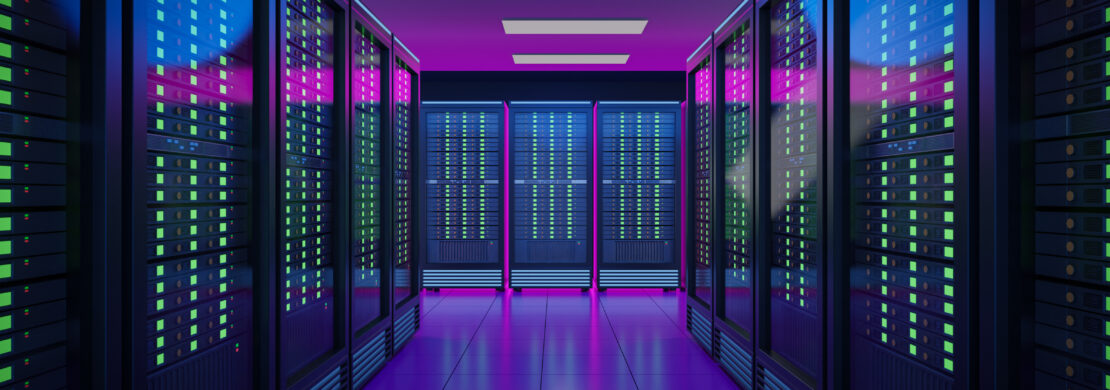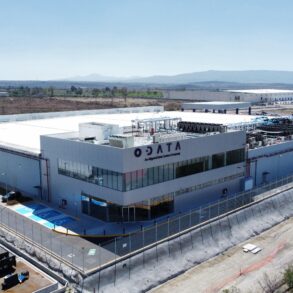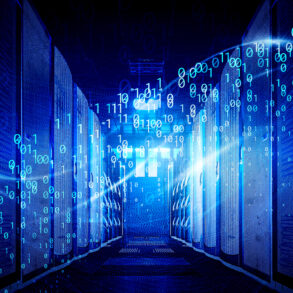Data Center: learn all about this crucial structure for business
8 minutes readingThe Data Center has been an essential part of the business infrastructure. After all, it is the heart of the corporate network, as it hosts business-critical applications, as well as stores sensitive data and keeps it secure across physical and virtual barriers.
Despite not being new to the market, this installation is constantly evolving, following trends and new demands. As an example, today Data Processing Centers are already used in conjunction with other elements, such as cloud computing environments, in the composition of a hybrid architecture of Information Technology (IT).
But to best use this critical component in corporate strategy, you must know it well. In this sense, understanding the basis of the Data Center, what it needs to operate and what types exist can help in this mission.
For this, in this article, we will show an overview of this installation and its benefits to organizations from the most different sectors.
Want to know more? Keep reading!
Understanding the Data Center
In the age of data, an ever-increasing volume of information is being generated and shared worldwide. And as a basis, it uses the connection between Data Centers, edge computing and the public and private cloud.
But after all, what is this central structure made of?
In general, the Data Center is a physical facility that supports business operations, accommodating applications, services and data on demand. There is a network of computing and storage resources in it, in addition to several other components such as routers, switches, firewalls and servers.
Another feature common to this structure is that, as it supports mission-critical systems, which cannot run the risk of stopping, they need a controlled environment with:
- Robust ventilation and cooling systems capable of preventing damage to appliances;
- Abundant and reliable power supply with backup;
- Connections to external networks;
- Physical and virtual protective measures.
Although all generally contain such characteristics as a basis, there can be many differences from one Data Center to another. For example, they can vary in size – whether occupying the equivalent of a closet, a room or even an entire building.
In addition, the levels of security, latency and resiliency are also different, following the specific needs of the business and industry.
It is also worth mentioning that hospitals and health laboratories, which need real-time access to patient histories and control systems for medical equipment, such as scanners, tomographs, ultrasound devices and Doppler readers, among others. And therefore, its Data Centers assume mission-critical characteristics, requiring low latency and high availability to avoid downtime incidents.
How do Data Centers work?
Within the Data Center, in addition to the components themselves, such as computers and routers, the operation of technology can be divided into three main pillars:
- First, it is necessary to mention the computational resources, which are responsible not only for processing but also for memory and local storage. This is the engine of technology and one of the reasons why the service is sought after;
- There is still the network infrastructure, which is responsible for the connection between physical and virtual servers and the Data Center services themselves. Furthermore, it is in charge of external connectivity, providing access to the location of end users;
- Finally, we can mention the storage infrastructure, responsible for storing large volumes of data, whether sensitive or not.
It is worth remembering that today, the General Law for the Protection of Personal Data (LGPD) is already in force in Brazil. Evidently, the Data Center needs to be aligned with the guidelines established by the legislation, guaranteeing care and transparency from the collection to the treatment of this information.
READ HERE: Understand why Data Centers need renewable energy
An overview of the evolution of this technology
Initially, the idea was born in the United States in 1965. That year, the National Data Center Proposal was published, which supported the creation and storage of detailed files of Americans by the country’s government.
The information in this single Data Center would be comprehensive, such as fingerprints, criminal background data and even tax records. Precisely because of the concern for citizens’ privacy, the plan ended up not materializing. However, the concept gave way to the creation of the Data Center as we know it today.
Of course, there were several stages of evolution before reaching the current level. At first, this infrastructure was permanently established locally (a model also known as ‘on-premise’), and managed by the company’s own IT department. Then came the concept of virtualizing the infrastructure, improving resource usage and mobility of workloads.
Today, the scenario is marked by an increase in the use of the cloud, even as a native environment for applications. For companies looking for a resilient ecosystem, the combination of Data Center and Cloud structures stands out the most.
READ HERE: Why regional Data Center network capillarity matters for your IT
What are the types of Data Center?
Since a wide range of organizations from all sectors uses Data Center services, there are also different types of this technology to meet the demand.
First, it is essential to emphasize that the installation can be classified differently. Computing and storage technologies, energy efficiency, or even the fact that the facility belongs to one or more companies can make a difference in segmentation.
At the same time, Data Center models can be differentiated by the services they support. To illustrate, we have selected four of the main types:
Corporate, On-premise or Enterprise
Generally, these facilities are built by the companies themselves and maintained by a specialized team, sporadically resorting to third-party providers’ assistance. This model is also known as on-premise, as it is located on the organization’s premises. Among the benefits, one can highlight the proximity of the structure to the users, which benefits the use of the internet network.
Internet Data Center
It is a standard based on cloud computing structure, consolidating itself as a digital model of Data Center. In other words, data and applications live in the cloud instead of being stored in a physical environment. Thus, they are accessed via the Internet.
Hosting
This model foresees using a third-party infrastructure, such as a service provider, but with characteristics similar to those of the corporate Data Center. The big difference, however, is that here, the IT structure is the responsibility of the contracted provider. Including this is a prevalent model in the corporate market.
Colocation
In this model, the company hires, as a service, the physical space (from a rack to an entire building) of a Data Center built and maintained by a specialized provider and installs its equipment. Thus, in colocation – a modality in which ODATA specializes – what you acquire, in practice, is the ideal fraction to allocate your computing environment, including internet services with ultra-connectivity, cleaning, cooling systems and security.
READ HERE: Wholesale Data Center: understand the model and the benefits for your business
Why is the Data Center essential for all types of companies?
Identifying the Data Center’s role in everyday corporate life can often be challenging since the structure supports countless business activities.
Just to mention a few examples, there are productivity applications, business management systems (ERP) and customer relationship management (CRM), among many others. In fact, even the simple act of sending emails and sharing files depends on using computational resources.
Due to this overall performance, the benefits of this infrastructure in the corporate strategy are also vast. Among them are:
Cybernetic protection: security protocols and other tools are used to constantly check for vulnerabilities and reduce the chances of data leakage or loss;
Data privacy: performance complies with LGPD guidelines;
Scalability: it can add to the company’s structure, responding to the need to expand a server.
Additionally, having the Data Center in the business structure, regardless of the model, is also a way to prepare for the future.
The arrival of 5G and, along with the new generation of mobile connections, new opportunities will emerge, especially for technologies such as the Internet of Things (IoT) and Big Data. As a result, the volume of data generated will increase exponentially in a short period.
Anyway, this movement will require not only scalability but a powerful processing capacity for all this information to be recorded and analyzed. And it is in this sense that the Data Center stands out as a crucial solution for maintaining business operations.
READ TOO: Why colocation is critical to the future of hybrid cloud
Hybrid architecture is trending
After the wave of digital transformation acceleration of 2020, a long-term strategy has become very popular when it comes to IT architecture.
Ecosystems that combine on-premise, cloud and colocation structures have emerged in response to social distancing and the consequent increase in the remote work model. During this period, organizations with a mostly physical structure needed to adapt and migrate workloads to the cloud.
However, the hybrid architecture was already a trend for the future of IT, as only a system of this magnitude will be able to support the increase in the volume of data to come.
After all, according to Social Good Brasil’s analysis, 35 trillion gigabytes of information were generated by the end of 2021. And, with 5G increasing the potential use of IoT, as well as Artificial Intelligence and Big Data solutions, this number is expected to grow even more.
The structure can also incorporate several operational models. Some elements also standing out are Multicloud, which brings together cloud services from different providers, and the Hybrid Cloud, which combines public and private cloud. Indeed, the latter is already used by 80% of companies on the global stage, according to a survey by Flexera.
ALSO REED: Understand why Data Center outsourcing can improve your company’s sustainability rates
Conclusion
The Data Center is an integral part of the corporate strategy in the most different markets – whether in the on-premise model, in the cloud, or in colocation. Most importantly, it became clear that adopting it as a hybrid IT architecture element is crucial for companies to prepare for future challenges.
For this very reason, the Data Center market is expected to grow by US$ 519.34 billion by 2025. The estimate, brought by the Data Center Market report, also points to the adoption of multicloud and network updates to support connectivity in the 5G standard as the main drivers.
Keeping up with market trends and needs, ODATA stands out as one of the most qualified Data Center services providers to support the creation of this robust and resilient structure.
Our team works from the construction and operation of Data Centers dedicated to a client, in the built-to-suit model, to colocation alternatives, with redundancy throughout the infrastructure and availability of 99.98%.
Do you want to know how to maximize the results of your technological infrastructure? Contact one of our specialists and understand what we can do for you.
Exclusive E-BOOKS
to help you learn more about the world of colocation.

Related Posts
SUBSCRIBE TO OUR NEWSLETTER






